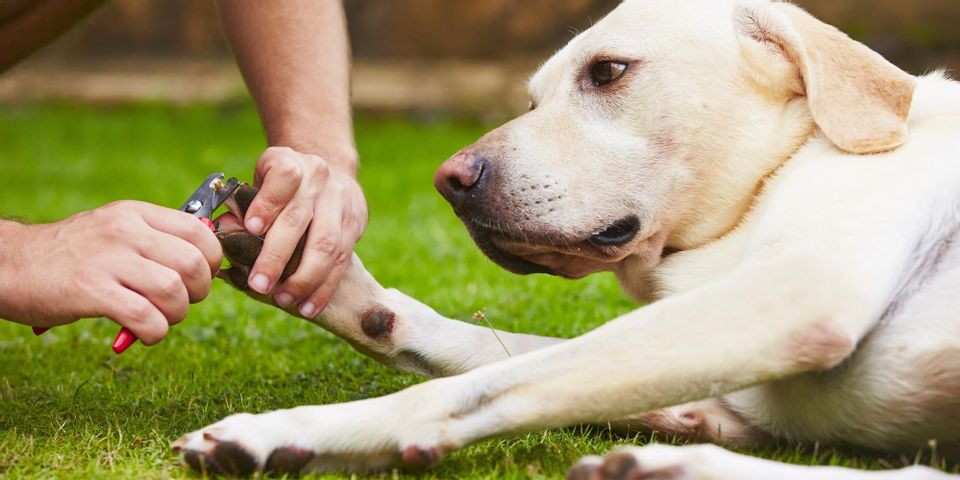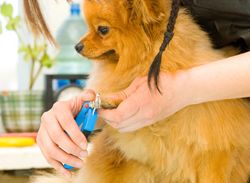
For dogs, claw care can make the difference between walking comfortably or living in chronic pain. Here’s more information about how to trim your dog’s claws, how to keep them comfortable, and when to seek the help of a veterinarian.
Trimming Your Pet’s Claws
Claws Aren’t the Same as Nails
Unlike human fingernails, which sit flat and lie on a nail matrix on top of your fingers, claws are conical, come to a point, and attach directly to the bones in your pet’s paws. Claws also have their own blood supply and nerves, which means that they are much more susceptible to injury than human fingernails.
Claws are meant for digging and tearing apart food in the wild. Housepets like dogs need regular claw trimming since they aren’t subjected to the same kind of rigor as their ancestors. If you leave their claws untrimmed, the excess length can cause your dog to walk with their front and hind legs closer together, which can strain their muscles and joints and lead to injury.
 Clipping Tips
Clipping Tips
Since claws have nerves and blood vessels inside, it’s easy to hurt your animal by clipping the claw improperly. To do so correctly, always use scissor-style clippers instead of guillotine clippers; the latter can crush the claw and cause pain for your pet. To make your pet comfortable, offer plenty of treats and cuddles during the process.
Start by holding your animal’s paws firmly but gently, then make shallow cuts from the end of the paw at a 45-degree angle. Some scissor- or plier-style clippers have a convenient guide that makes it easy to determine the depth at which to cut. Only trim the claw until you see a white ring with a black dot on the inside. Consult your veterinarian if your animal bleeds excessively or if there’s pain, swelling, or discomfort.
If you’re having a difficult time trimming your dog’s claws or you’re concerned about the effects of poor trimming in the past, turn to the veterinarians at Pet Center Ltd. in Columbia, MO. In addition to evaluating the health of your animal and finding solutions to remedy the problem, these talented professionals can also administer ultrasounds, help with parasite control, and manage puppy and kitten care. Find out more about how their veterinarians can help by visiting their website or calling (573) 445-3000.
About the Business
Have a question? Ask the experts!
Send your question

